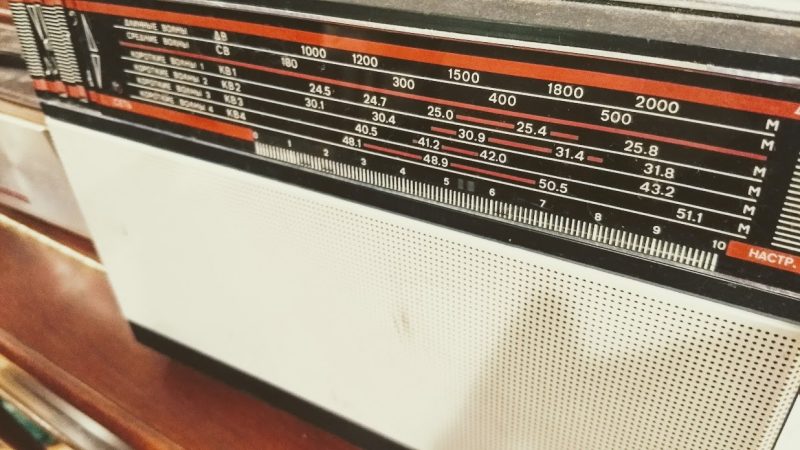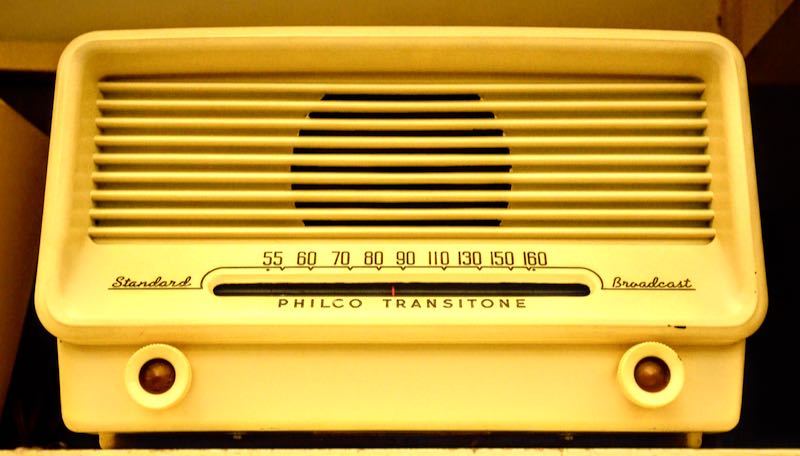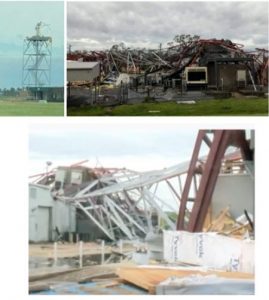Radio Waves: Stories Making Waves in the World of Radio
Because I keep my ear to the waves, as well as receive many tips from others who do the same, I find myself privy to radio-related stories that might interest SWLing Post readers. To that end: Welcome to the SWLing Post’s Radio Waves, a collection of links to interesting stories making waves in the world of radio. Enjoy!
Many thanks to SWLing Post contributors Paul, Michael Bird, William Lee, Rob PE9PE, and the Southgate ARC for the following tips:
SABA partners with T&A and Sentech to deliver digital radio in SADC (Advanced Television)
The Southern African community will soon enjoy digital audio broadcasts, thanks to an initiative lead by a South African based entity, Thembeka & Associates that has taken the lead in implementing the much anticipated interactive radio solution.
This was announced by the Secretary-General of the Southern African Broadcasting Association, SABA, Mr Cecil Jarurakouje Nguvauva, following the conclusion of initial agreements between the participating entities. Welcoming the digital radio solution to the SADC region, Nguvauva emphasised the need for rural communities to be engaged fully in the developmental agenda of the respective African governments if the planned development is to add value to the lives of the most disadvantaged members of our society.
Chief Executive Officer of Thembeka & Associates, Madam Thembeka Kaka has hailed this initiative a huge success for the continent and a dream come true for her institution. Madam Kaka added that as a member of the National Committee on ICT Chamber Accessible Broadcasting for People Living with Disabilities, she has passionately driven this project for a long while. Madam Kaka added that “Following the announcement of the Policy Directive that has introduced Digital Sound Broadcasting by the South African Minister of Communications & Digital Technologies, Stella Ndabeni-Abrahams in July this year. I have since realised that greater opportunities have emerged for the broadcast industry as a whole. And this initialises an evolution of radio broadcasts going forward,” she stated.
Sentech’s Meyerton Radio Shortwave site in South Africa will carry the Digital Sound Broadcasting Shortwave Transmission from the broadcast centre in Southern Africa to the rest of SADC countries.
For the initial stage, only six countries are earmarked for the coverage, before it is rolled out to the rest of the SADC Region. The targeted countries are Namibia, Botswana, Lesotho, Eswatini, Zambia and South Africa. The rapid deployment is planned to work alongside the existing analogue radio service, which will seamlessly transition to a fully-fledged Digital Radio transmission in SADC. The receivers to be deployed will have the capabilities to receive and transmit both Analogue and Digital radio signal on FM and AM.
The primary purpose of the initiative is for governments and various newsmakers to urgently provide vital information to all citizens, especially the rural, remote and marginalised vulnerable communities. The outbreak of COVID-19 has amplified the need for this undertaking, that has highlighted risk areas in our various communities. Particular emphasis will be given to the following sectors in the respective communities: Education Sector; Health Sector; Socio-Economic factors; Gender issues; Youth & Disability.[…]
Listening Out, Listening For, Listening In: Cold War Radio Broadcasting and the Late Soviet Audience (Wiley Online Library)
Abstract
This article interrogates the well?known phenomenon of western broadcasting to the Soviet Union from the little?known vantage point of the audience’s sonic experience and expression. I use the example of the BBC’s main popular music program in the late USSR, Rok posevy, with its remarkable presenter, Seva Novgorodsev, to explore fundamental questions about the who, how, and why of listening to the so?called “enemy voices.” The popularity of Novgorodsev’s show, I argue, is best understood in the context of the Soviet soundscape and, in particular, of longstanding Soviet media practices, including radio jamming and Soviet ideologies of the voice. Novgorodsev’s Rok posevy presented listeners with a powerful alternative sociocultural space, one that promoted models of authority and community very different from Soviet norms and, indeed, antithetical to Soviet norms.[…]
Swedish Electrical Safety Agency threatens ban on sale of optimizers (Southgate ARC)
In Sweden the Swedish Electrical Safety Agency may ban the sale of optimizers used in Solar Panel installations due to the high level of RF Pollution they produce
A translation of an SSA post reads:
The Swedish Electrical Safety Agency wants to remove optimizers that spread interference. “It should be easy for the electrician to do the right thing.”
– We want to remove all solar cell products that spread disruption from the market. It should be easy for the electrician to do the right thing, and if you choose CE-marked gadgets and follow the manufacturer’s instructions, the system should be nice, says Martin Gustafsson, who is an inspector in market control at the Swedish Electrical Safety Agency. reports of disturbing solar cells. In addition to radio amateurs such as Anders Ljunggren, the mobile operator Telia is among those affected . The Swedish Electrical Safety Board has made inspection visits to disturbing facilities, and carried out a market review of optimizers and inverters from eleven different manufacturers.
“They take advantage of a gap in the standard and instead hide behind a general EMC standard.”
The report is not complete yet. However, one of the conclusions is that a number of manufacturers of interfering products have chosen not to use the standard developed for photovoltaic products, but which has not yet been harmonized by the European Commission.
– They use a gap in the standard and instead hide behind a general EMC standard, which does not make any demands on the dc side. This makes our evidentiary situation difficult. But if the disruption problems are not solved, the products can be banned from sale, says Martin Gustafsson.
Text: Charlotta von Schultz – www.elinstallatoren.se
Thank you SM5TJH / Janne for the information
Source SSA https://tinyurl.com/SwedenSSA
New Ham Radio Onboard The ISS Is On The Air (K0LWC Blog)
Ham Radio operators have enjoyed making contact with the ISS for many years. The holy grail has always been talking to ISS astronauts on FM simplex (145.800) — but those can be rare chance encounters. Ham radio operators have also enjoyed slow-scan television (SSTV) broadcasts and APRS packet radio via the ISS digipeater. Now we get to work the world’s most expensive FM repeater thanks to the new InterOperable Radio System (IORS) installed on the ISS.
The InterOperable Radio System (IORS) replaces an ancient Ericsson radio system and packet module that were certified for spaceflight over two decades ago. The 5 watt HT that was aboard the ISS was getting worn out after many years of use. The Ericsson radio looks like something from a 1990s episode of Cops.
The new IORS was launched from Kennedy Space Center on March 6, 2020 onboard the SpaceX CRS-20 resupply mission. It consists of a custom space-modified Kenwood D710GA transceiver and an ARISS-developed multi-voltage power supply. The equipment was installed by NASA astronaut Chris Cassidy (KF5KDR).
New Kenwood D710G ‘Space Flight Edition’
The radio now being used is a Kenwood D710G and was engineered specifically for space flight. JVCKENWOOD USA and the ARISS worked closely to modify the D710G. The upgrades were performed by JVCKENWOOD and include:
- Output power is hardware limited to 25 watts for the safety of the International Space Station
- Custom firmware and menus tailored for operation onboard the ISS.
- Higher output/high-reliability fan to allow continuous repeater operation.
Continuous fan operation is an important feature in space for the reliability of the radio. There is no convection in microgravity, so all heat-generating components need to be cooled by moving air or conduction. If the radio burns up, there isn’t a Ham Radio Outlet down the street to grab parts.[Continue reading the the full article at K0LWC’s blog…]
Do you enjoy the SWLing Post?
Please consider supporting us via Patreon or our Coffee Fund!
Your support makes articles like this one possible. Thank you!




